
Mantidae is one of the largest families in the order of praying mantises, based on the type species Mantis religiosa; however, most genera are tropical or subtropical. Historically, this was the only family in the order, and many references still use the term "mantid" to refer to any mantis. Technically, however, "mantid" refers only to members of the family Mantidae, and not the 14 remaining families of mantises. Some of the most recent classifications have promoted a number of the mantid subfamilies to the rank of family, e.g. Iridopterygidae, Sibyllidae, Tarachodidae, Thespidae, and Toxoderidae, while other classifications have reduced the number of subfamilies without elevating to higher rank.

Hymenopodidae is a family of the order Mantodea (mantises), which contains six subfamilies. Some of the species in this family mimic flowers and are found camouflaged among them; these are called flower mantises. Their coloration is aggressive mimicry, luring prey to approach close enough to be seized and eaten.
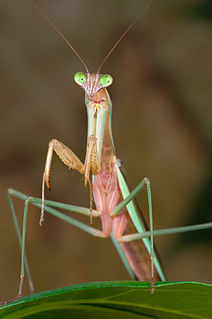
Tenodera is a genus of mantis in the family Mantidae which contains several species of praying mantises. The species in this genus can be found primarily in Africa, Asia and Australia, but also North America.
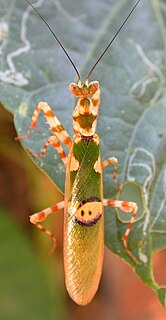
Creobroter is a genus of flower mantises in the tribe Hymenopodini; species are concentrated in Asia. The name comes from the Greek kreo-, meaning "flesh") and broter" meaning "eating", therefore, "flesh-eating", an apt name for a predatory insect. Both sexes have long wings and are capable fliers. Full-grown males are about 3 to 4 cm in length; females are about 4 to 5 cm.
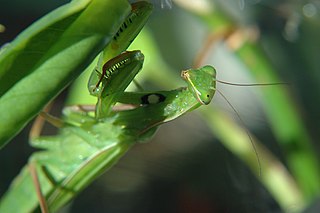
The genus Mantis is in the family Mantidae, of the mantis order Mantodea.

Archimantis is a genus of praying mantis found in Australia. These species are ranging from 150 mm to 180mm, and can be quite aggressive when full adult.

Ameles is a wide-ranging genus of praying mantises represented in Africa, Asia, and Europe.

Brunneria is a genus of praying mantises in family Mantidae. They are often called stick mantis for their slender shape and the species of the genus are native to the Americas.

Litaneutria is a genus of ground mantises in the family Amelidae found in North America.

Acontista is a genus of mantises in the family Acanthopidae.
Bantia is a genus of mantises in the family Thespidae.
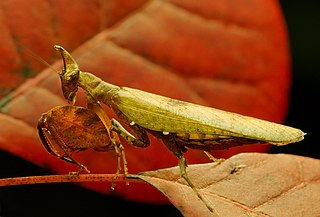
Hestiasula is a genus of Asian praying mantids in the subfamily Oxypilinae of the family Hymenopodidae.
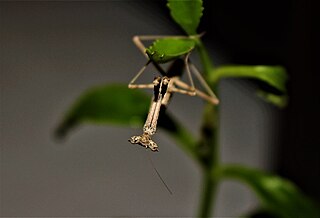
Oxyothespis is a genus of praying mantis in the family Toxoderidae. Members of this genus have been called grass mantises.

Toxoderidae is a family of praying mantises.

Rivetina is a genus of praying mantises in the family Rivetinidae.
Oligonyx is a genus of mantises in the family Thespidae.

Statilia is a genus of praying mantis that resembles dead or living grass. Statilia species live in Australia, Africa, Asia and islands.
Phasmomantis sumichrasti is a species of mantis of the family Mantidae.
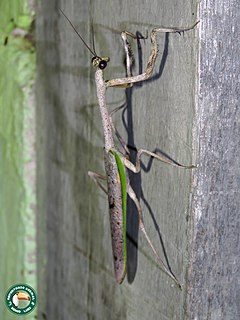
Pseudovates is a genus of praying mantis in the family Mantidae. There are more than 20 described species in the genus Pseudovates, and are found in North, Central, and South America.

Liturgusa is the type genus of praying mantises of the family Liturgusidae. The genus consists of more than twenty species with a Neotropical distribution.
















